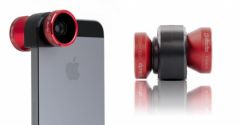Yesterday, the MacBook Air, MacBook Pro 13″ and Mac mini received their first deliveries. This is why for several hours numerous tests of these new machines have been popping up on the internet. Expectations were indeed quite high, given Apple's promises in terms of power and autonomy for its new M1 chip integrated into these new generations of Mac computers.
And as early testers revealed, there should be no disappointments among “M1” Mac buyers.
Design and exterior
Overall, in terms of design, nothing changes. The metallic dress of each of the three Macs is the same as for previous generations, the same for the dimensions. The only notable detail is that the Mac mini M1 is not available in Space Gray finish, as previously, but in Silver.
The differences are internal, as we will see below.
M1 chip: what performance?
On YouTube, videographer Dave Lee has made some very comprehensive and very interesting comparisons. We invite you to watch his video if you are comfortable with the language of Shakespeare.
Benchmarks
First of all, he was interested in the performance of the three Macs with M1 chip in benchmarks. The first test software used is Cinebench. Here are the results:

© Dave Lee
We see that in single-core testing, all M1 Macs do better than previous generations, and even better than the 16″ MacBook Pro even though it is equipped with a high-end 9th generation Intel i9 processor.
In multi-core testing, the MacBook Pro 16″ takes the lead:

© Dave Lee
But the M1 Macs have nothing to be ashamed of with good scores and above all a notable performance gain compared to older generations of products.
Davy Lee also ran benchmarks to see what the GPU integrated into the M1 chip was capable of:
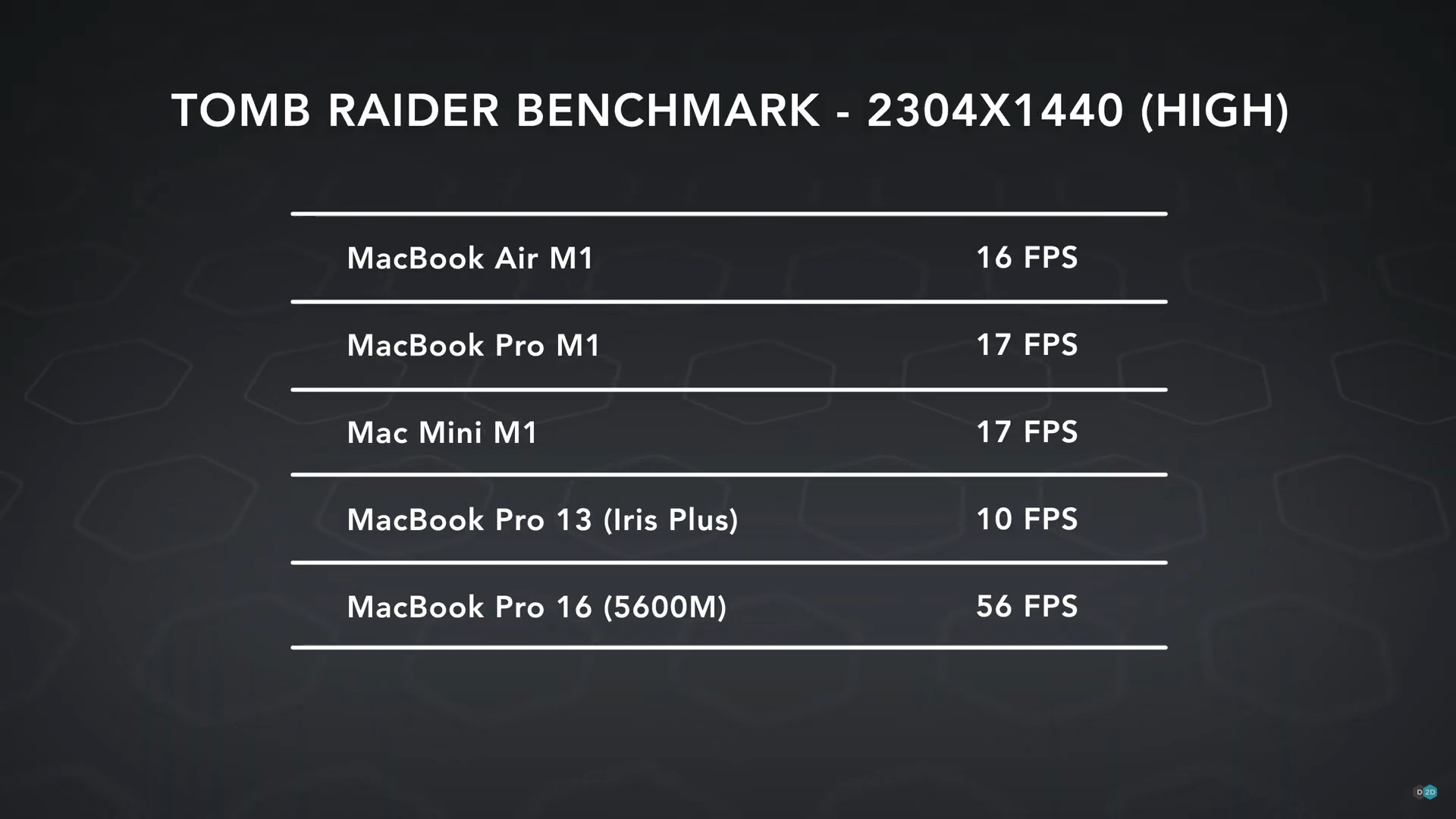
© Dave Lee
There is no photo there.As seen yesterday, the M1 chip does much better than the Iris Plus GPU integrated into Intel processors. But it can't hold a candle to a dedicated graphics card like the AMD Radeon 5600M available in the MacBook Pro 16″ configurator.
Software
It's all well and good to compare machines on benchmarks, but nothing beats testing in real use, on software that can be used by everyone. Davy Lee has thought about it and therefore offers comparisons on video editing software, but also application compilation.
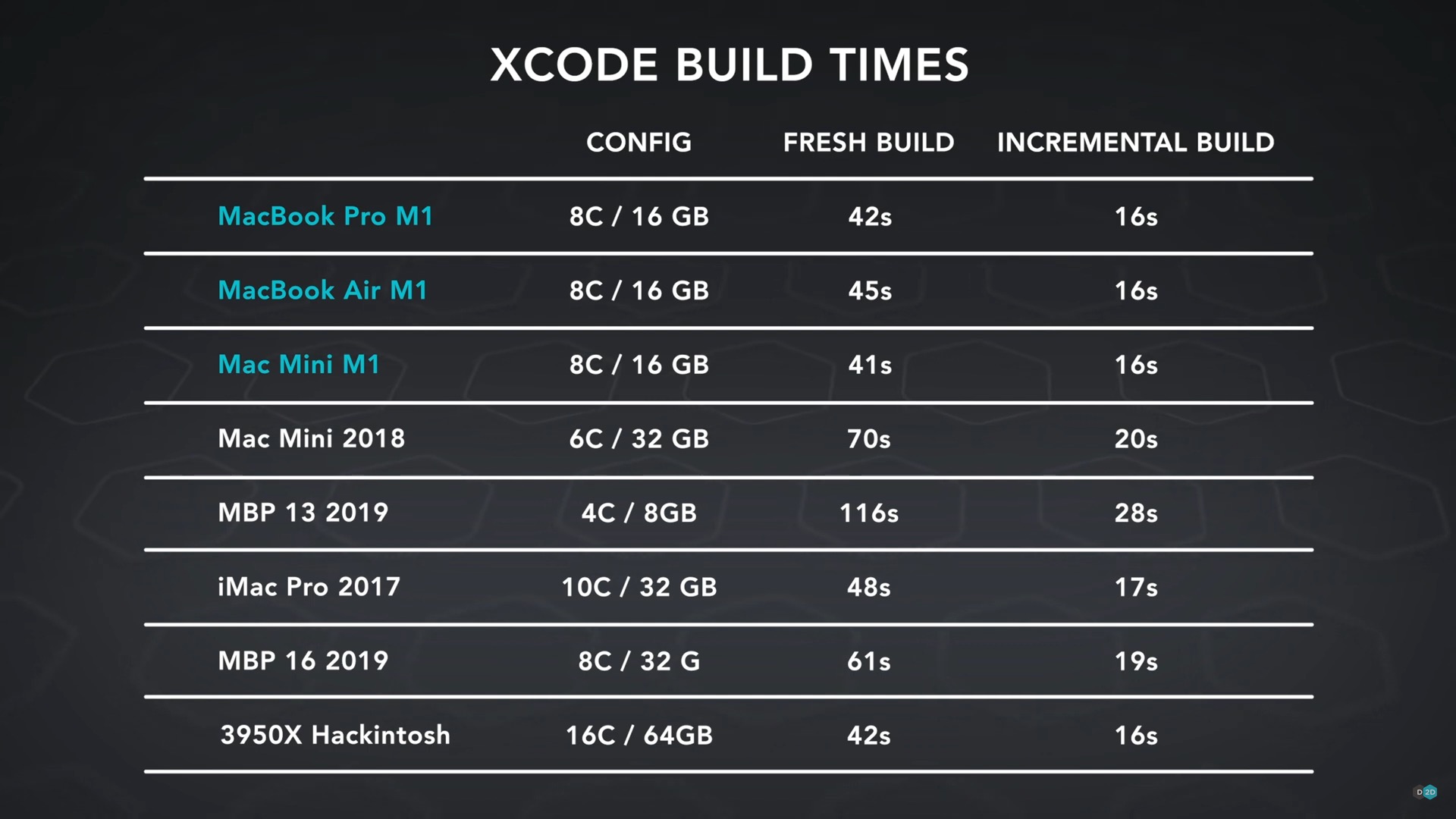
© Dave Lee
On Xcode for example, app development software from Apple and optimized for Apple M1, the results are astonishing. The M1 Macs are faster than all other Macs considered, including the iMac Pro and the 16″ MacBook Pro, and just as good as the Hackintosh machine also tested. This integrates a 16-core CPU accompanied by 64 GB of RAM. As a reminder, the M1 chip tested here contains 8 cores and 16 GB of RAM.

© Dave Lee
On Final Cut Pro, Apple's video software also optimized for the Apple M1, the M1 Macs are on par with the 16″ MacBook Pro. It's strong.
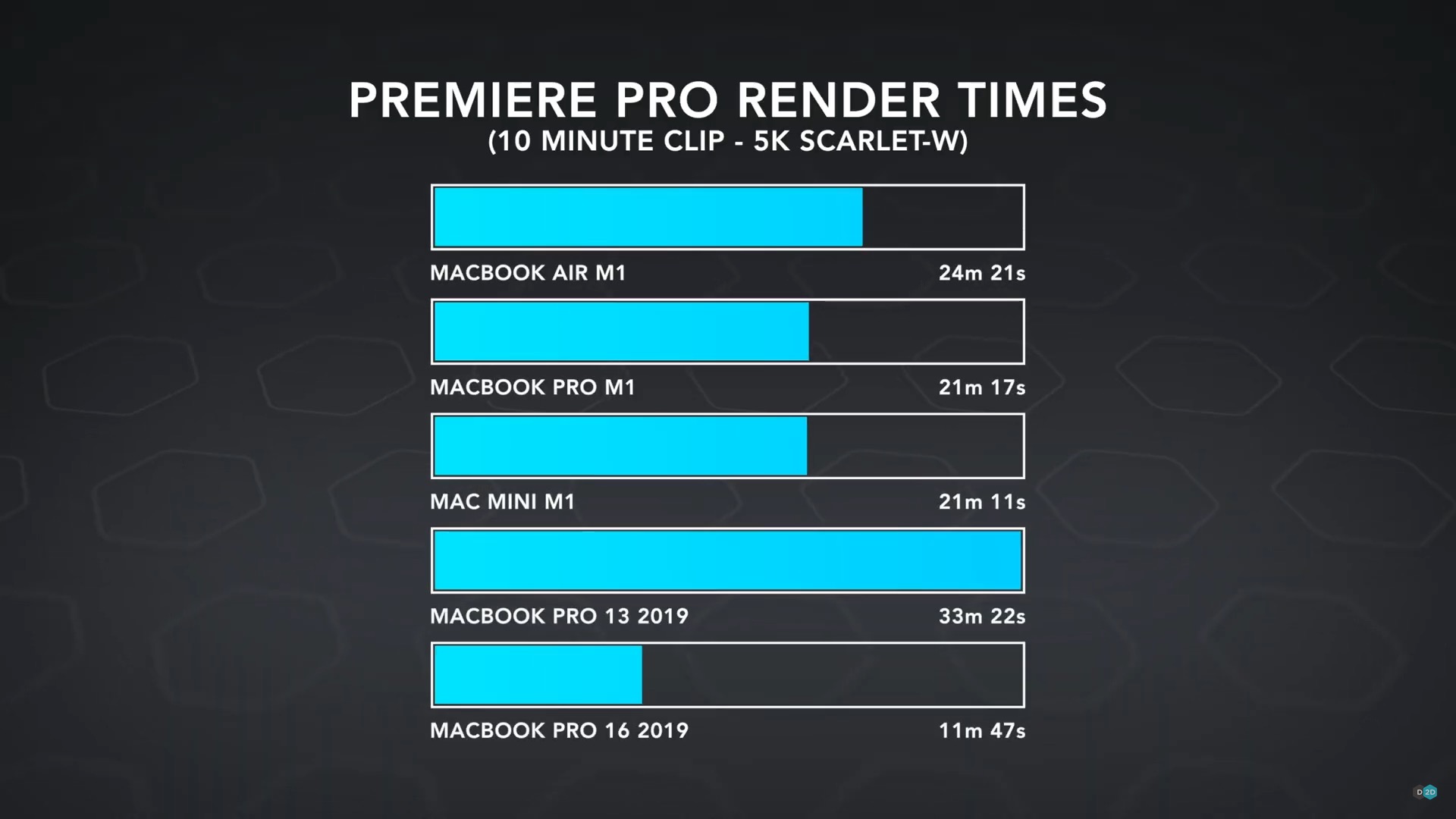
© Dave Lee
Finally, on Adobe Premiere Pro, a competing editing software, the M1 Macs are overtaken by the 16-inch MacBook Pro. But the reason is simple, the test was carried out under Premiere in a non-optimized version with Apple processors. Davy Lee wanted to see how Macs with M1 chips behaved with unoptimized software. And the performance really isn't bad. In addition, it will only be a matter of time before the software becomes optimized for Apple M1 chips, so the comparisons will take a completely different turn.
MacBook Air 2020 M1 256 GB at the best price Base price: €1,129
See more offers
Autonomy: Apple did not lie
Apart from good performance, the Apple M1 Chip is also built to offer great battery life on portable Macs. This announcement from Apple was verified during tests. Here, for example, are the longevity results obtained by Davy Lee:
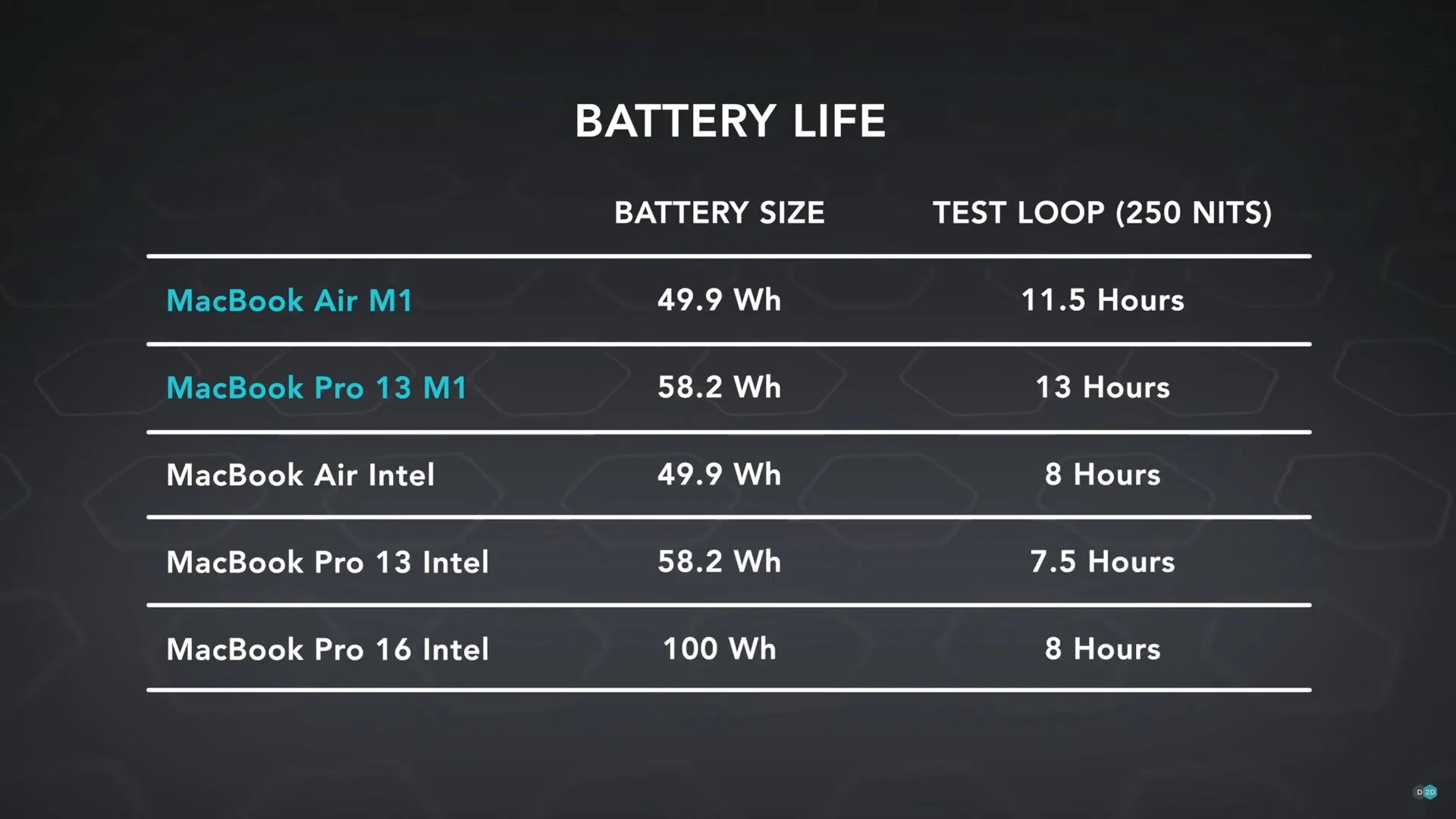
© Dave Lee
The two M1 MacBooks easily beat their predecessor and even the 16″ inch MacBook Pro without difficulty. The gain in autonomy is real, of several hours, yet with the same battery size. Applause for Apple.
A revolution
According to Davy Lee, the Apple M1 chip is a revolution. You just need to see that the MacBook Air can maintain high-level performance, equivalent to a MacBook Pro 16″ i9, or do even better, all without fans and without even overheating, to realize this. The tester notes that the processor can adapt its clock frequency to a reduction during excessively long work sessions to limit heat generation. But even in these cases, the MacBook Air is a power bomb. In addition, autonomy gains in the process, and not just a little.
We find this observation in the majority of other tests published since yesterday. Performance and autonomy are the two strong points of the new machines, as announcediMore, but alsoApple Insideror evenTechCrunch,SixColorsetMacWorld. In terms of criticism, let's remember that concerning the webcam of the MacBook Air and Pro, which caps at a resolution of 720p, and those of the still limited performance of the Apple M1 chip with non-optimized software. But these defects are not prohibitive. For the webcam, simply use your iPhone or iPad instead, using an app likeEpocCam. For optimized software, you will simply have to wait.
Note that the biggest weak point of the M1 chip remains its graphics part. If this is extremely important to you, then you might be better off waiting for the next generation of Apple Mx chips, which may be released with the iMac, 16″ MacBook Pro, and Mac Pro update next year. we hope so.



